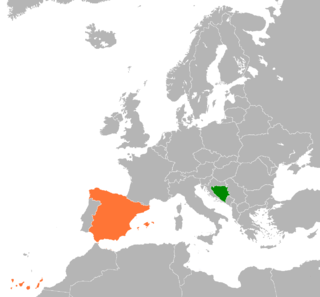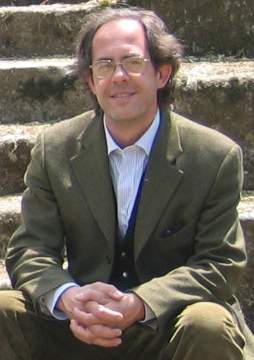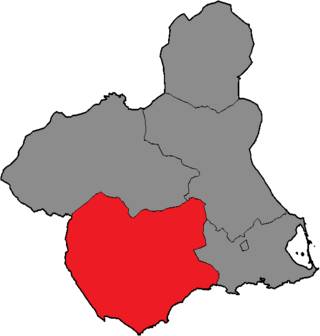
Tarragona is a port city located in northeast Spain on the Costa Daurada by the Mediterranean Sea. Founded before the fifth century BC, it is the capital of the Province of Tarragona, and part of Tarragonès and Catalonia. Geographically, it is bordered on the north by the Province of Barcelona and the Province of Lleida. The city has a population of 136,150(2021).

Murcia is a city in south-eastern Spain, the capital and most populous city of the autonomous community of the Region of Murcia, and the seventh largest city in the country. It has a population of 460,349 inhabitants in 2021. The total population of the metropolitan area is 672,773 in 2020, covering an urban area of 1,230.9 km2. It is located on the Segura River, in the southeast of the Iberian Peninsula. It has a climate with hot summers, mild winters, and relatively low precipitation.

Tarragona is a province of eastern Spain, in the southern part of the autonomous community of Catalonia. It is bordered by the provinces of Castellón, Teruel, Zaragoza, Lérida and Barcelona and by the Mediterranean Sea.

Hispania Tarraconensis was one of three Roman provinces in Hispania. It encompassed much of the northern, eastern and central territories of modern Spain along with modern northern Portugal. Southern Spain, the region now called Andalusia was the province of Hispania Baetica. On the Atlantic west lay the province of Lusitania, partially coincident with modern-day Portugal.

The Iberians were an ancient people settled in the eastern and southern coasts of the Iberian peninsula, at least from the 6th century BC. They are described in Greek and Roman sources. Roman sources also use the term Hispani to refer to the Iberians.

Tarraco is the ancient name of the current city of Tarragona. It was the oldest Roman settlement on the Iberian Peninsula. It became the capital of the Roman province of Hispania Citerior during the period of the Roman Republic, and of Hispania Tarraconensis following the latter's creation during the Roman Empire.

Baza is a town in the province of Granada in Andalusia, twice a former Catholic bishopric and now a Latin Catholic titular see as Basti.

The Region of Murcia, is an autonomous community of Spain located in the southeastern part of the Iberian Peninsula, on the Mediterranean coast. The region is 11,313 km2 (4,368 sq mi) in area and had a population of 1,511,251 as at the start of 2020. About one-third of its population lives in the capital, Murcia. At 2,014 m (6,608 ft), the region's highest point is Los Obispos Peak in the Massif of Revolcadores.

The Centre for Energy, Environmental and Technological Research (CIEMAT), until 1986 Junta de Energía Nuclear (JEN), is a Spanish public research institution.
The 2005–2006 LEB season was the 10th season of the Liga Española de Baloncesto, second tier of the Spanish basketball.

The 2007 Murcian regional election was held on Sunday, 27 May 2007, to elect the 7th Regional Assembly of the autonomous community of the Region of Murcia. All 45 seats in the Regional Assembly were up for election. The election was held simultaneously with regional elections in twelve other autonomous communities and local elections all throughout Spain.

Bosnia and Herzegovina–Spain relations were formally established on 14 December 1992.

Sagunto Castle is a fortress overlooking the town of Sagunto, near Valencia in Spain. The site's history extends back over two thousand years and includes Iberian, Roman and medieval remains. During the Islamic period, the castle was known as Murbĩtar and Morvedre. The castle was declared a National Monument in 1931.

Xavier Dupré i Raventós was a Spanish archaeologist and historian of classical antiquity. He was the first provincial archaeologist appointed by the archaeological division of the Generalitat de Catalunya in Tarragona. He was also director of Taller–Escola d’Arqueologia de Tarragona (TED’A), director of excavations of the Roman city of Tusculum and deputy director of the Escuela Española de Historia y Arqueología in Rome.

District One was one of the five constituencies represented in the Regional Assembly of Murcia, the regional legislature of the Region of Murcia. The constituency elected seven deputies. It comprised the municipalities of Lorca, Aguilas, Puerto Lumbreras, Totana, Alhama de Murcia, Librilla, Aledo and Mazarrón. The electoral system used the D'Hondt method and a closed-list proportional representation, with a minimum threshold of five percent regionally.

District Three was one of the five constituencies represented in the Regional Assembly of Murcia, the regional legislature of the Region of Murcia. The constituency last elected 21 deputies in 2015. It comprised the municipalities of Murcia, Alcantarilla, Beniel, Molina de Segura, Alguazas, Las Torres de Cotillas, Lorquí, Ceutí, Cieza, Abarán, Blanca, Archena, Ricote, Ulea, Villanueva del Río Segura, Ojós, Fortuna, Abanilla and Santomera. The electoral system used the D'Hondt method and a closed-list proportional representation, with a minimum threshold of five percent regionally.

District Four was one of the five constituencies represented in the Regional Assembly of Murcia, the regional legislature of the Region of Murcia. The constituency last elected four deputies in 2015. It comprised the municipalities of Caravaca, Cehegín, Calasparra, Moratalla, Bullas, Pliego, Mula, Albudeite and Campos del Río. The electoral system used the D'Hondt method and a closed-list proportional representation, with a minimum threshold of five percent regionally.

District Five was one of the five constituencies represented in the Regional Assembly of Murcia, the regional legislature of the Region of Murcia. The constituency last elected two deputies in 2015. It comprised the municipalities of Yecla and Jumilla. The electoral system used the D'Hondt method and a closed-list proportional representation, with a minimum threshold of five percent regionally.

Don Emilio Bonelli y Hernando was a Spanish military officer, author, explorer, colonial administrator and Africanist.




















